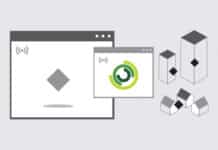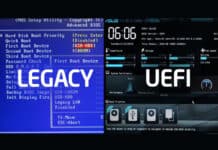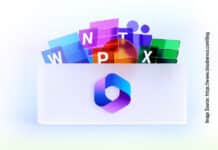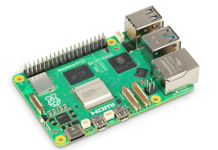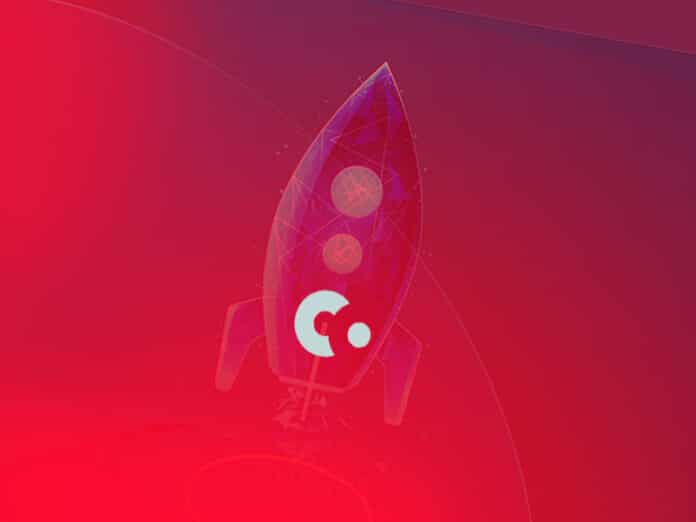Corda is a reliable and secure blockchain platform that can help businesses improve their operations significantly. Its user-friendly interface as well as privacy and confidentiality-enhancing features make it a great choice for organisations looking to incorporate blockchain technology into their operations. Let’s get familiar with it.
Getting started with Corda involves several steps, including installation and setup, creating a Corda project, understanding the Corda architecture and network model, and developing and deploying CorDapps. To begin, users must download and install the required software and dependencies, including a Java development kit, a compatible version of IntelliJ IDEA, and the Corda software itself. Once it’s installed, they can create a Corda project to start building their distributed applications.
To understand the Corda architecture and network model, we must become familiar with concepts such as nodes, flows, contracts, vaults, and the Corda network map. This includes understanding the different types of nodes in a Corda network (e.g. notary, issue, observer), how flows facilitate communication and data exchange between nodes, and how contracts define the terms and conditions of transactions on the network. We can then develop and deploy our own Corda apps, known as CorDapps, using the Corda API and following best practices for secure, scalable, and efficient development.
An introduction to Corda
Corda is an open source blockchain platform designed for building enterprise-grade solutions. This distributed ledger technology (DLT) platform is used for developing decentralised applications in various industries. It was developed by R3, a consortium of banks and financial companies. The platform is designed to enable secure and private transactions between businesses and individuals. Corda uses a unique approach to blockchain technology that provides several benefits over traditional public blockchains.
Unlike public blockchains, Corda is designed to facilitate transactions between specific parties, as opposed to being open to the public. This allows for greater privacy and confidentiality, as only the parties involved in a transaction have access to the information. In addition, Corda’s design allows for the use of smart contracts, which can automate complex business logic and reduce the need for intermediaries.
The platform is designed to integrate with existing databases and applications, so businesses can incorporate Corda into their existing workflows without needing to overhaul their infrastructure. This makes it easier for businesses to take advantage of the benefits of blockchain technology.
Setting up Corda
To set up Corda, you need:
Hardware requirements
- A server or workstation with at least 8GB of RAM
- A minimum of 200GB of disk space
- A multicore processor with a minimum clock speed of 2GHz
Software requirements
- On-premises or cloud infrastructure provider
- An operating system compatible with Java 8 or higher, such as Windows Server, Linux, or macOS
- Java Development Kit (JDK) version 8 or higher
- Oracle Database 12c or higher, or compatible database management system
Prerequisites for Corda Enterprise
- A licence key
- A secure and dedicated network or VPN with the necessary infrastructure for hosting a distributed ledger platform
- The ability to configure databases, firewalls and monitoring policies as required
- A team of Corda developers with expertise in distributed systems and legal contracts
Corda is designed to be flexible, and its requirements vary depending on the nature of the network and the needs of the client. It can be customised to integrate with a wide range of technologies, such as IoT devices, blockchain networks, and legacy systems. Therefore, it is essential to have a clear understanding of the network’s goals and requirements when using Corda.
To install Corda:
- Make sure your system meets the Corda requirements.
- Download the Corda installer from the appropriate source.
- Install the prerequisites for running Corda.
- Install the Corda executable and begin the installation process.
- Follow the on-screen instructions to complete the installation.
- Once the installation is completed, verify it by running a few simple tests to make sure it’s working properly.
- Set up and configure Corda according to your needs.
| Note: The instructions to install Corda may vary based on your system configuration and the version of Corda you’re installing. Check the official Corda documentation for detailed installation steps. |
Creating a Corda node
A node in Corda is a fundamental building block that facilitates transactions among various participants on the blockchain network. Nodes play a crucial role in maintaining the integrity of the distributed ledger system and ensuring that all participants have access to the same information in real-time.
A few key functions that a node performs in Corda are validation of transactions, management of identities, sharing of data, and execution of smart contracts.
Nodes are critical to the functioning of the Corda blockchain network, and their importance cannot be overstated. They enable secure, real-time, and efficient transactions among various participants, which is crucial for businesses that operate in complex and highly regulated environments.
Creating a Corda node is a relatively simple process, although it does require some technical knowledge and familiarity with blockchain technologies. Here is a step-by-step guide on how to create a Corda node.
- Corda requires Java 8 (or later) to run. Make sure you have it installed on your system.
- To download Corda and other required components, you will need to install Git.
- Now go to the Corda website and download the latest version of Corda.
- Next, set up the environment. Unpack the downloaded Corda archive to a directory of your choice. Then navigate to that directory and open a terminal or command prompt.
- Run the following command to generate a set of certificates for your node:
./gradlew certificates
- Now run the node by executing the following command:
java -jar corda.jar
- Your Corda node is now up and running. However, you may want to customise it further. To do so, you can edit the node configuration file (node.conf), which is located in the node’s installation directory.
- To participate in a Corda network, you will need to join it. To do so, you will need to obtain the network parameters file from the network operator, and then update your node’s configuration file accordingly.
- Congratulations! Your Corda node is now set up and ready for development. You can start building apps and smart contracts on top of the Corda platform.
| Note: There are many additional configuration options and advanced features available when working with Corda. It’s a good idea to consult the documentation and seek out online resources if you need further assistance. |
Building Corda applications
Developing applications on Corda
Developing on Corda involves using the Corda platform to build and deploy distributed applications (dApps) that can be used to facilitate secure and private transactions between different parties. The Corda platform is built on top of the Kotlin programming language, making it easy for developers to create custom dApps using familiar programming concepts.
There are several tools and libraries available to developers who want to build on Corda. The Corda development kit (CDK) includes libraries for building smart contracts, creating nodes, and defining data models. The Corda developer portal also provides extensive documentation, tutorials, and other resources to help developers get started with the platform.
Developing on Corda offers a wide range of benefits for businesses and developers alike. By using the platform to build and deploy custom dApps, businesses can streamline their operations, reduce costs, and improve customer experiences. Developers, meanwhile, can take advantage of the platform’s extensive resources and tools to build innovative solutions that solve real-world problems.
Using Corda’s APIs
The Corda API allows developers to interact with the Corda node and manipulate data within it. The key features of the Corda API include:
- Data structures and protocols for Corda’s data models
- Support for building flow-based workflows or contract executions
- Easy integration with other business systems
- Fine-grained access control over shared data
- A flexible identity and key management system
- A messaging system that supports point-to-point and broadcast messaging
- Advanced analytics and monitoring tools
Overall, the Corda API provides a powerful toolkit for building decentralised applications, enabling businesses to leverage the power of blockchain technology in a secure and efficient manner. By providing a set of well-designed, modular APIs, Corda allows developers to take full advantage of the platform’s features and capabilities, while maintaining the flexibility to build custom solutions that meet their specific business needs.
Deploying Corda applications
Deploying a Corda network
Here are some crucial steps to follow when deploying a Corda network.
Define your use case: Before deploying Corda, it is essential to identify the purpose of the network. You need to determine what type of assets you will be exchanging, who your counterparties are, and what business processes will be involved. This will help you determine the size and scope of the network, as well as the necessary infrastructure, resources, and security requirements.
Set up infrastructure: The next step is to set up the necessary infrastructure to deploy Corda. This can include servers, network devices, and databases. You should ensure that the infrastructure meets Corda’s system requirements and is configured properly to support Corda’s operation.
Configure Corda nodes: Once the infrastructure is set up, you need to configure Corda nodes. Corda’s nodes are responsible for executing transactions, recording them on the ledger, and communicating with other nodes in the network. You can configure Corda nodes based on the business requirements, such as the number of nodes and their roles in the network.
Integrate with existing systems: Corda can integrate with existing enterprise systems such as ERPs, CRMs, and other legacy systems. It enables you to automate your existing business processes and workflows by creating flows that interact with the underlying Corda ledger.
Set up security: Security is a critical aspect of Corda deployment. You need to ensure that the network is secure by implementing various security measures such as identity management, network security, access control, and data encryption.
Run testing and validation: Before going live, it is critical to run testing and validation to ensure that the network is functioning correctly and meets the expectations of the business. Corda offers various testing tools and frameworks to test the network’s operations, such as the Corda Testnet.
Launch and monitor: Once the network is launched, you need to monitor it regularly to ensure its stability, performance, and security. Corda’s monitoring tools can help you keep track of network activities, identify issues, and address them quickly.
Deploying the Corda network requires careful planning, implementation, and ongoing maintenance to ensure the security, stability, and performance of the network. By following these steps, you can deploy Corda with confidence and reap the benefits of blockchain technology for your business.
Corda’s deployment options
Corda offers three deployment options.
- On-premises deployment: Corda can be deployed on-premises, meaning that the nodes run on servers dedicated to a particular organisation or group of organisations. This option gives the organisation more control over the deployment, as all the data is stored within its own infrastructure.
- Cloud deployment: Corda can be deployed on a cloud platform such as Microsoft Azure, Amazon Web Services (AWS), or Google Cloud Platform. This deployment option is typically faster and more cost-effective than on-premises deployment, as it does not require the organisation to invest in its own infrastructure.
- Hybrid deployment: Corda can also be deployed in a hybrid environment, where some nodes are deployed on-premises and others are deployed in the cloud. This option allows the organisation to take advantage of the benefits of both on-premises and cloud deployments, while minimising the potential risks associated with a single deployment model.
As the use of blockchain and other distributed ledger technologies continues to grow, Corda is likely to play an increasingly important role in the financial sector and beyond. Its unique approach to privacy and its focus on the needs of regulated industries make it particularly well-suited to support the creation of new applications and services that improve business processes and create new opportunities for growth and innovation. In the future, we can expect to see Corda being used for a wide range of applications, from supply chain management to cross-border payments, tokenisation of assets, and much more.


























